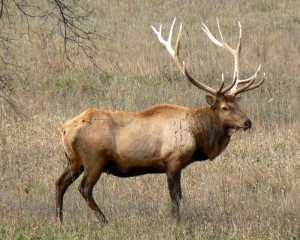
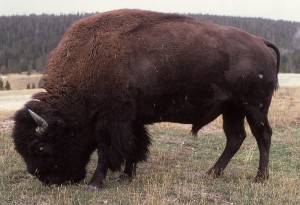
Here is a little bit different Freak of the Week for you! It’s a question that I’ve been asked several times, so I thought I’d put it out there for you to ponder: “Why do deer knees bend backwards?” It’s not just deer, but the question can be asked of elk (which is really just a large species of deer), bison, cattle, horse, or any other large ungulate. In fact, this apples to most birds too! How would you answer this question!?
Answer:
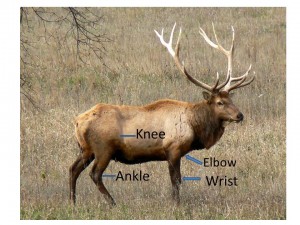
Elk, with joints labelled
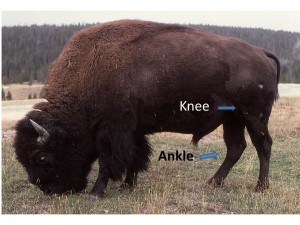
Bison, with joints labelled
Those are indeed ankles and the knees do actually bend forward. Sometimes people get confused because the upper limb bone of the hind and forelimb, the femur and humerus respectively, sometimes gets lost in the mass of the body. That, combined with the fact that many animals have extended the length of their feet and now walk on either their toes or on the ends of their hooves, makes it appear that the ankle is actually the knee! Both the elk and bison are considered unguligrade meaning that they walk on their hooves. The keratin hooves encase the last toe bone, so basically they are walking on their tip-toes! This means that most of the foot is actually off the ground and the heel bone (calcaneus) projects to the back of the animal, and can look like a backward knee! Sometimes this is easier to see on the skeleton:
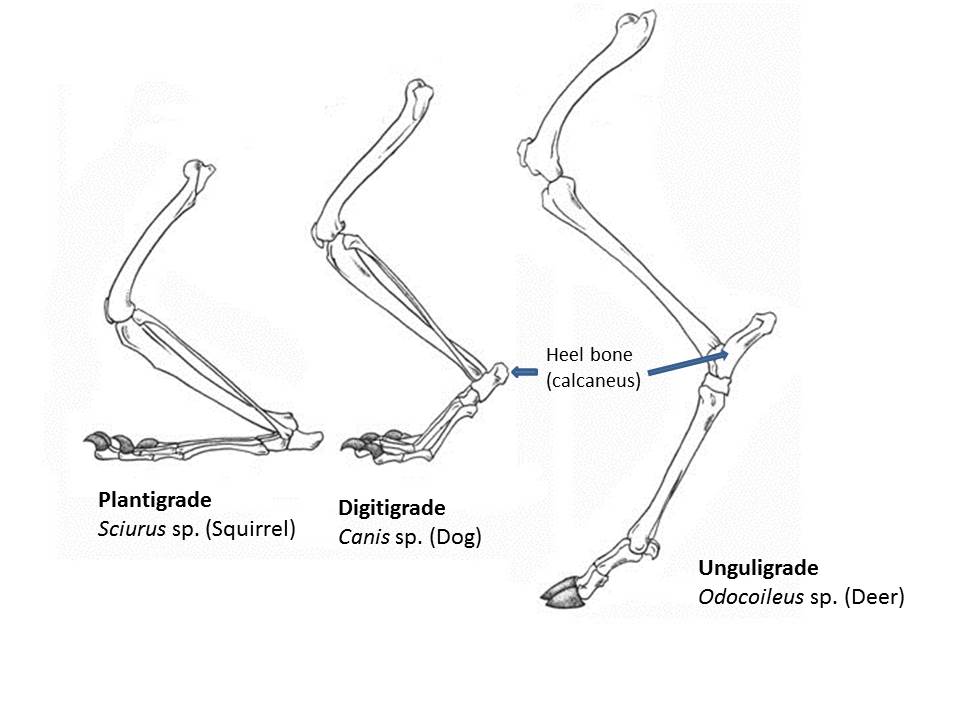
Why did some animals evolve such a system? For speed! The elongated leg and fused bones of the foot provides for greater speed in a forward direction. Notice how many of the prey species are unguligrade, such as deer, elk, moose, pronghorn, bison, etc. while many of the carnivores (canids, felids, etc.) are digitigrade meaning that they run on their toes and not just on the last digit.